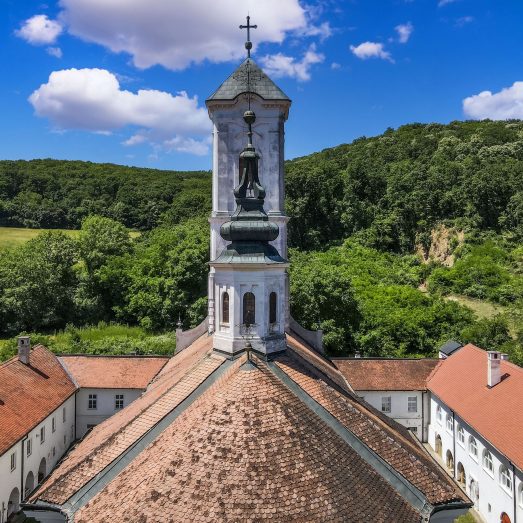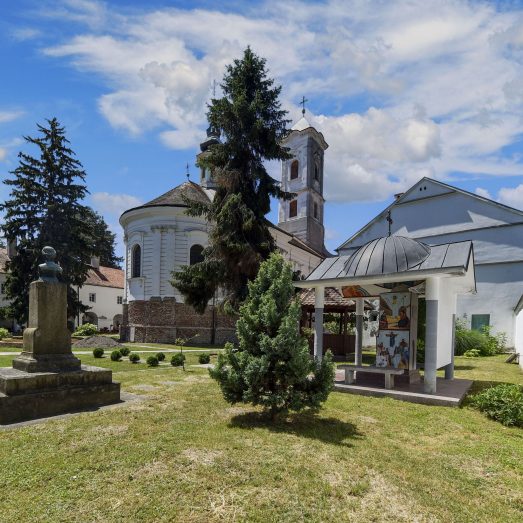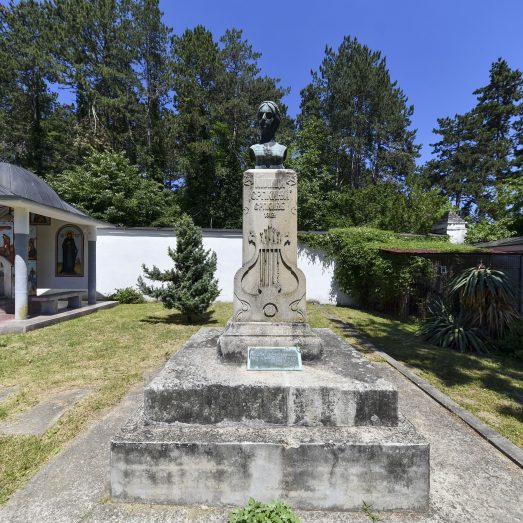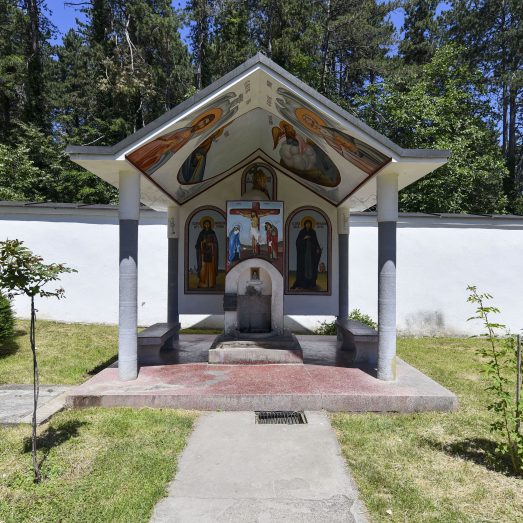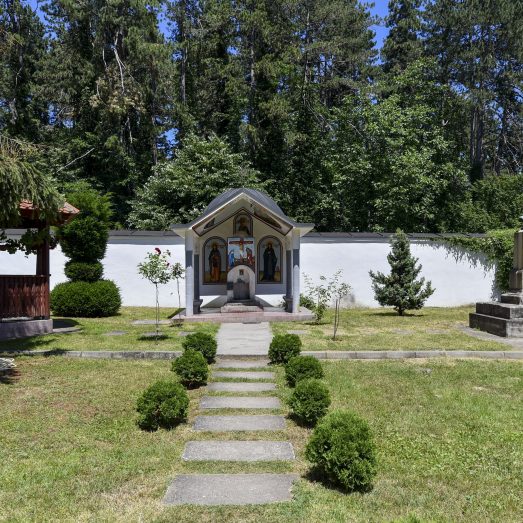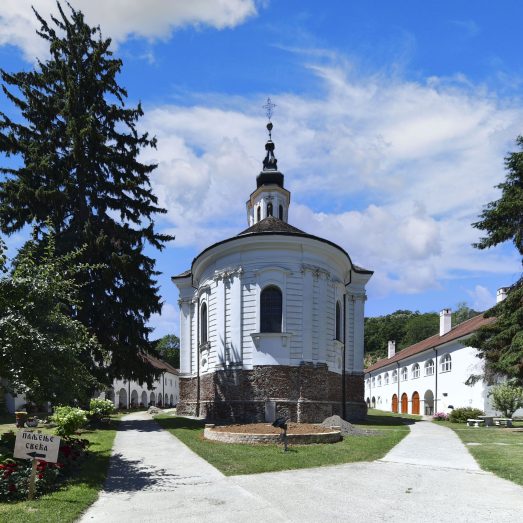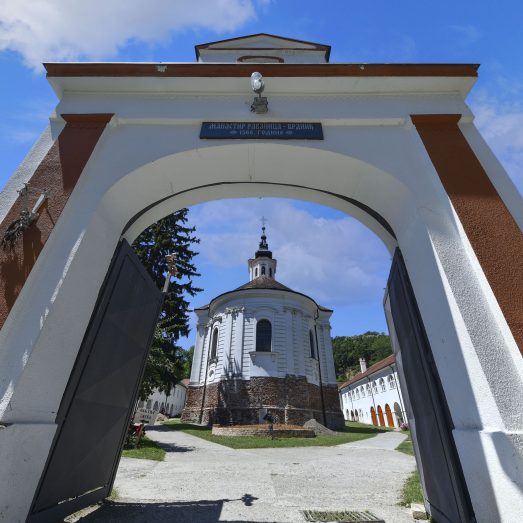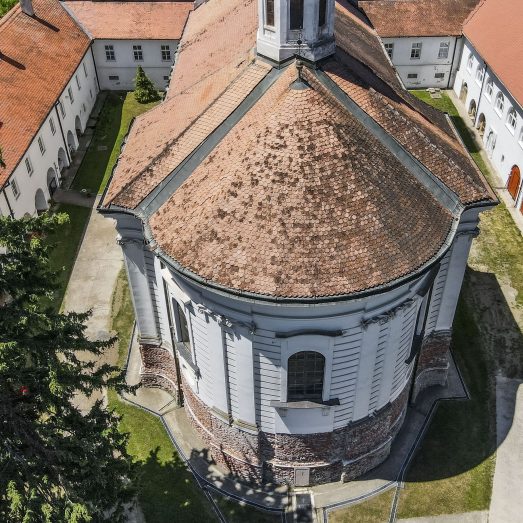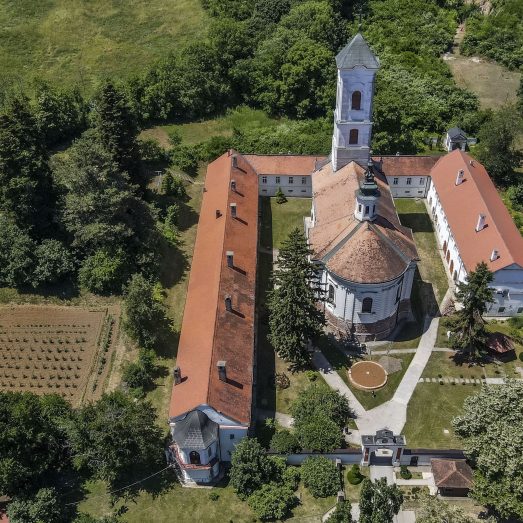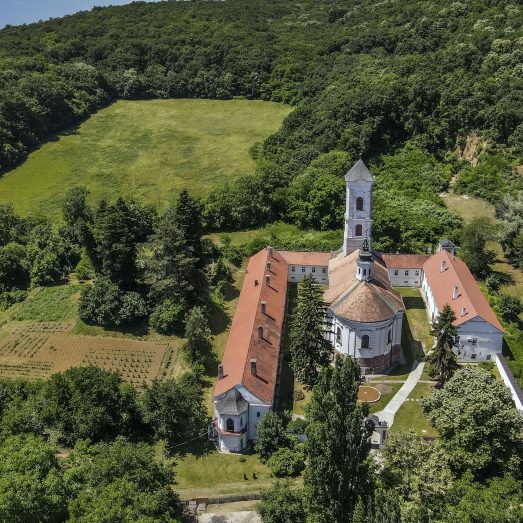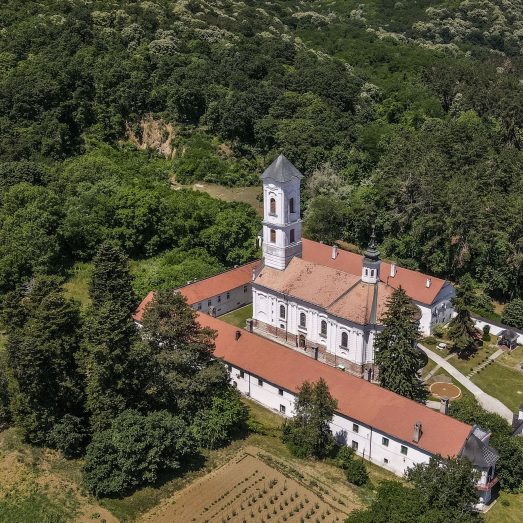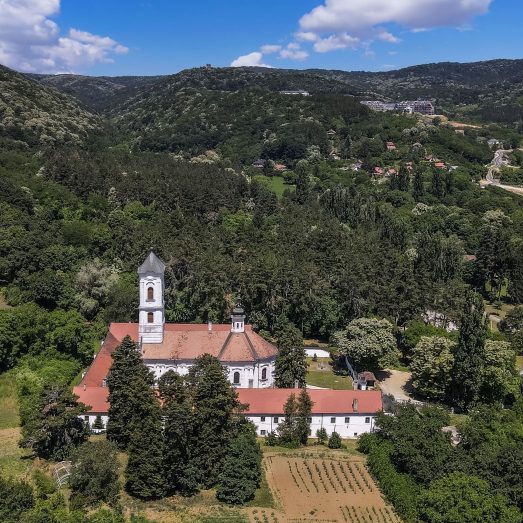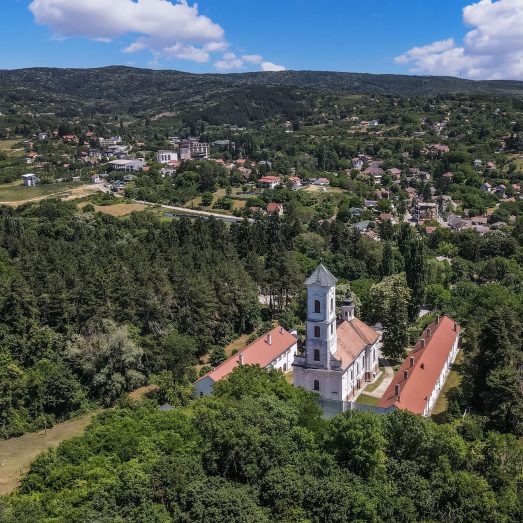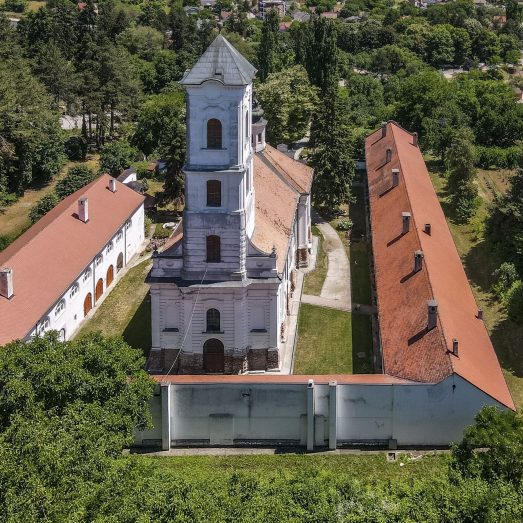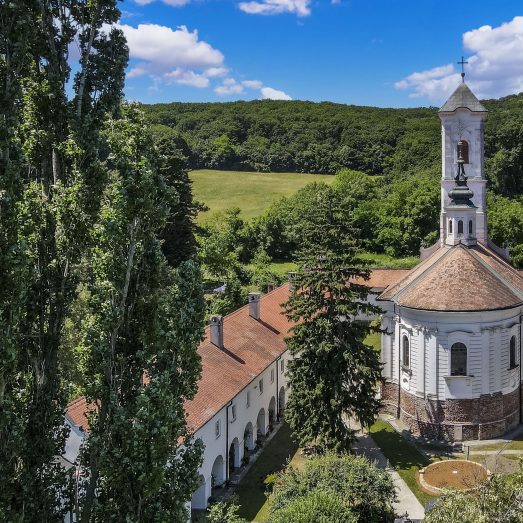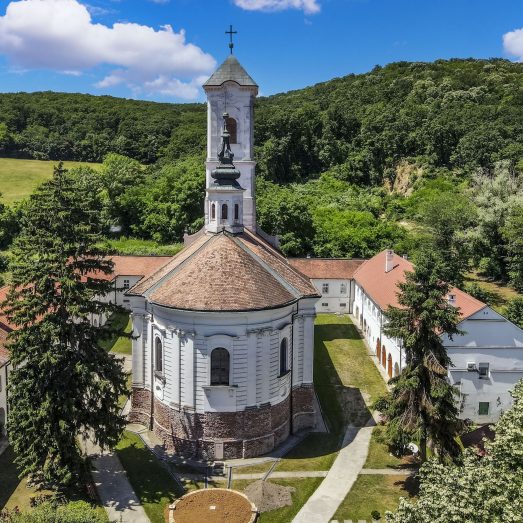The monastery church is dedicated to the Ascension of Christ (Vaznesenje Hristovo) (40th day after Easter)
There are no precise data on the founding of this monastery. There is information in a menologium (liturgical book in Orthodox churches) from 1589, preserved in the Šišatovac Monastery, which testifies to its existence. According to historical sources, it is known that it existed in the middle of the 16th century as a monastery dedicated to St. John (Sv. Jovan). After the Great Migration of the Serbs (1690), the monks of Moravska Ravanica, the endowment of Prince Lazar Hrebeljanović, came here, carrying his relic. With their arrival from Szentendre, where they originally settled, the church was restored, a new consecration was established – the Ascension of Christ (Vaznesenje Hristovo), the same one of the endowment of Prince Lazar. A new name was also established – Vrdnik Monastery (or Sremska) Ravanica.
At the beginning of the 19th century, during the time of Metropolitan Stefan Stratimirović, a new church was built according to the design of Kosta Zmijanović and thanks to the efforts of the builder Kornelije Srbin. The Baroque, multi-storey bell tower above the narthex (which also has a choir gallery) was erected at the same time. New, spacious stone konaks were built and renovated successively, thanks to the contributions of wealthy citizens and hierarchs until the end of the 18th and the beginning of the 19th century. During the Second World War, the monastery was looted, and many manuscripts, books and charters from the rich treasury were taken or destroyed. Among other things, there was the “Charter of Prince Lazar to Moravska Ravanica”(“Povelja kneza Lazara moravskoj Ravanici”) (1381), then Jefimija’s “Praise to Prince Lazar” ( ”Pohvala knezu Lazaru”) (beginning of the 15th century), which is today kept in the Museum of the Serbian Orthodox Church in Belgrade.
Chapels of the Translation of the relic of St. Sava (Prenosa moštiju Sv. Save) (in the konak), St. Petka (Sv. Petka) (at the spring) and St. Emperor Constantine (Sv. car Konstantin) and Empress Jelena (behind the monastery) are of a more recent date. In the monastery garden there is a bust of poet and folklorist Milica Stojadinović Srpkinja (1828-1878), which was erected in 1912 by the Board of Serbian Girls (Odbor srpskih devojaka) from Irig.
In the middle of the 18th century, Stanoje Popović painted an iconostasis in the old church. The creation of the iconostasis and wall painting for the new church from the 19th century was entrusted to Dimitrije Avramović, an academic painter, a master of the transitional style close to the Viennese Nazarene style and early Romanticism who, according to the contract, completed the work in three years. The carving works on the iconostasis are the work of Marko Vujatović, and the gilding is the work of Petar Čortanović. The iconostasis captivates with its beauty and monumentality, and it also possesses one peculiarity, a rare feature in Orthodox iconography in which the order of icons is precisely known, which is that among the throne icons there are Serb saints: St. Prince Lazar (Sv. knez Lazar) and St. Sava (Sv. Sava). Wall paintings in the church were done by Dimitrije Avramović.
In the dining room of the northern konak built in the 1860s, Amvrosije Janković, a decade later, painted the famous painting “The Battle of Kosovo”(“Kosovski boj”). Unfortunately, as the dominant national legacy of the Serbs, this image was unsuitable for the Austro-Hungarians who destroyed it during the First World War. In the 1850s, Petar Čortanović painted scenes of the Battle of Kosovo in the same place – for the same reasons, this painting was destroyed by the Ustasha at the beginning of Second World War.
The monastery cherishes the memory of Prince Lazar, so the monastery’s patron saint day is Vidovdan, June 28, the day when he was executed in the Battle of Kosovo in 1389. The cult of the great martyr Prince Lazar was established in the 14th century, and it has been nurtured in Vrdnička Ravanica since the time of the Great Migration of the Serbs at the end of the 17th century. During Second World War, the relic of Prince Lazar (knez Lazar) was transferred to Belgrade and thus saved from Ustasha destruction. Today, they are in his endowment, in Moravska Ravanica. In Vrdnička Ravanica there is a reliquary (a gift from Obrad Futožanin from the middle of the 18th century) in which a part of the relic of St. Prince Lazar (Sv. knez Lazar) is kept, as well as a reliquary with particles of the relic of St. Anastasia of Rome.
Liturgy schedule: Wednesdays and Fridays at 7.00 a.m., Saturdays at 8.00 a.m., Sundays and church holidays at 9.00 a.m.
TOURIST INFORMATION: Decent dress (for women long skirt, long sleeves, and for men long trousers and shirt) is implied. Group visits should be announced: tel: + 381 (0)63 88 14 076 (father Lazar Cvetičanin).




